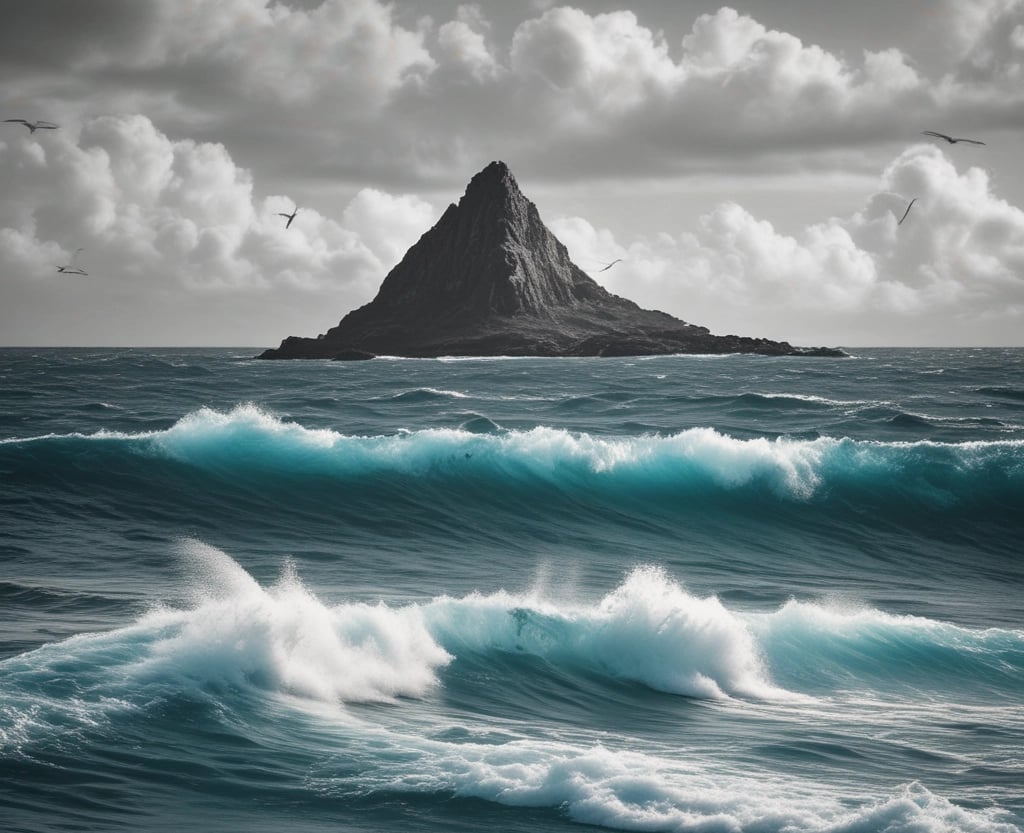The Bermuda Triangle: Between Science and the Stories That Won’t Die
MYSTERIES & ARCHAEOLOGY
MrTruth.Tv
9/15/20254 min read
It’s a patch of ocean with no borders on a map, no official recognition by governments, and no clear definition. Yet the Bermuda Triangle has become one of the most infamous places on Earth. The term refers to the expanse of Atlantic waters roughly bounded by Miami, Bermuda, and Puerto Rico—a stretch of sea where ships are said to vanish without a trace and aircraft mysteriously drop off radar.
For nearly 80 years, the Bermuda Triangle has been framed as a riddle. Is it a dangerous maritime zone, a playground for pseudoscience, or simply one of the busiest, stormiest pieces of ocean on the planet?
A Legend Born in Disappearance
The Triangle’s reputation traces back to a December afternoon in 1945, when five U.S. Navy bombers, known as Flight 19, vanished during a training mission out of Florida. Confused radio transmissions suggested the pilots were disoriented, running low on fuel, and unable to find land. When a rescue plane dispatched to search for them also disappeared, headlines around the country screamed of a “mystery zone.”
The legend grew in the following decades as writers dug through maritime records. They tied the disappearance of Flight 19 to older cases, like the USS Cyclops, a Navy cargo ship that sank with 309 men aboard in 1918, and two British airliners—the Star Tiger in 1948 and the Star Ariel in 1949—that went missing while flying to Bermuda.
By the 1960s, magazine articles and paperback thrillers had coined a name: the Bermuda Triangle. It was described as a place where time and space bent, where ships vanished into another dimension, where aliens snatched planes from the sky. Fact blurred with folklore, and a mystery was cemented in the public imagination.
The Numbers Don’t Add Up
Despite the notoriety, the Bermuda Triangle is not recognized as unusually hazardous by any maritime authority. The U.S. Coast Guard, which patrols the waters, maintains that “the Triangle does not exist” as a distinct danger zone. The National Oceanic and Atmospheric Administration (NOAA) echoes that position, stating that accident rates in the area are no higher than in any other heavily traveled region of ocean.
The Atlantic near Florida is among the busiest shipping lanes in the world, funnelling tankers, cruise liners, fishing boats, and military vessels through waters prone to volatile weather. When the sheer volume of traffic is considered, the disappearance rate is not out of the ordinary.
Marine insurance companies, which calculate risk with cold precision, do not charge higher premiums for vessels transiting the Bermuda Triangle. That’s perhaps the most telling verdict: the people with money on the line do not consider it more dangerous than anywhere else.
Science Offers Explanations
If the Bermuda Triangle’s reputation is overblown, why have so many ships and planes vanished there? Scientists and navigators point to several natural factors that, when combined, create real hazards.
Severe weather: The Caribbean and Atlantic waters are breeding grounds for hurricanes, tropical storms, and sudden squalls. A vessel caught in one without modern forecasting tools could vanish quickly.
Strong currents: The Gulf Stream, a powerful Atlantic current, surges through the Triangle, capable of sweeping wreckage away before searchers arrive.
Magnetic anomalies: Early sailors reported compass variations in the area. While magnetic deviation is real, it is not unique to the Triangle, and modern navigation tools largely correct for it.
Methane gas hydrates: Some geologists suggest that undersea methane deposits could, in rare events, erupt and reduce water density, causing ships to sink rapidly. The evidence is thin, but the idea persists.
Rogue waves: Towering waves more than 80 feet high have been confirmed in oceans worldwide. In storm-prone regions like the Triangle, such waves could easily overwhelm even large vessels.
Together, these factors make the region risky but not inexplicable. What often appears as “mystery” can usually be explained by natural forces and human error.
The Media Machine
If the Bermuda Triangle is not a deadly vortex, why does its legend endure? The answer lies in media and culture.
The 1970s in particular saw an explosion of books linking disappearances to supernatural forces. Charles Berlitz’s bestseller The Bermuda Triangle sold millions of copies, claiming extraterrestrial involvement and Atlantis-like ruins beneath the sea. Television specials amplified these claims, while Hollywood produced thrillers where aircraft simply blinked out of existence.
The narrative proved irresistible: a vast oceanic region where science failed and imagination reigned. Once the “mystery” label stuck, every lost boat or missing aircraft in the area was pulled into the story, regardless of the actual cause.
The Psychology of Mystery
Human psychology helps explain why the Bermuda Triangle remains captivating. We are pattern-seeking creatures, drawn to anomalies and coincidences. When multiple tragedies are linked to one area, the instinct is to search for a hidden cause.
Cognitive bias also plays a role. Stories of lost ships get retold endlessly, while routine safe crossings—the overwhelming majority—go unnoticed. Selective reporting builds a distorted picture, convincing us something unusual is happening.
Finally, mystery sells. The idea of a deadly zone in the Atlantic fuels books, podcasts, TV specials, and tourist interest in Bermuda and Florida. Even skeptics benefit from the myth: every new documentary debunking the Triangle relies on the allure of the mystery to draw viewers in.
A Real Risk, But Not a Supernatural One
For sailors, pilots, and passengers today, the Bermuda Triangle is not a realm of magic—it is an ocean subject to the same dangers as any other. Sudden hurricanes can still catch vessels unprepared. Navigational errors still occur. Planes still face the possibility of mechanical failure.
The difference now is technology. Satellites track storms with unprecedented accuracy, GPS provides reliable positioning, and modern communication ensures faster response to emergencies. Disappearances like those that built the Triangle’s reputation are far less likely.
Still, the idea of the Bermuda Triangle will not disappear. It represents something deeper than a patch of sea: it embodies our enduring fascination with the unknown, our willingness to suspend disbelief, and our appetite for stories where the boundaries of science blur.
Conclusion
The Bermuda Triangle is not the deadliest place on Earth, nor is it a supernatural void. It is a case study in how legends are made—from genuine tragedies, amplified by media, and sustained by human imagination.
Ships and planes do vanish there, but no more than in other busy stretches of ocean. The true mystery is not in the sea itself but in our minds: why we cling to the notion of hidden forces when the answers lie in storms, waves, currents, and human fallibility.
Yet the allure of the Bermuda Triangle remains unshaken. As long as people crave mystery, as long as stories of the unknown spark curiosity, the legend will live on—floating somewhere between science and story, fact and myth.


